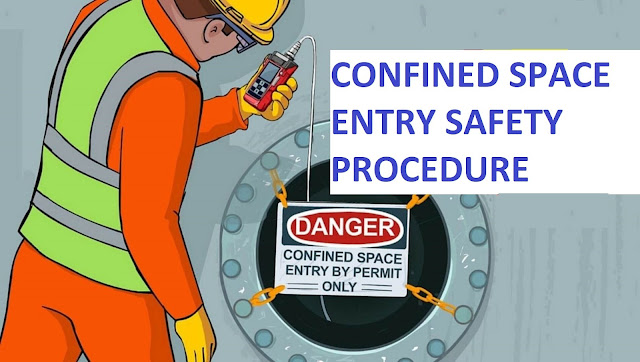For
every accidents that occur during a confined space entry, one of those
accidents results in loss of someone life. Confined spaces having a variety of
hazards and that is why specific procedures must be developed and followed for
every entry in confined space. This basic requirements is designed to review
these procedures for employees who have already been trained in confined space
entry. Only employees that have completed Confined Space training may
participate in a confined space entry.
Obtain
a copy of the entry permit and hazard assessment and review the hazards
associated with the confined space
Ensure
that the appropriate PPE, Rescue Retrieval Equipment and Communications
Equipment are available and in good working condition, do a pre check before
each use.
Lockout/Tagout
any hazardous energy that the entrant could be exposed to in the confined space
Conduct
continuous air monitoring utilizing a multi-gas air monitor in the confined
space
The confined
space must be labeled with a confined space “DANGER” sign
Review
the confined space “DANGER” sign and make sure the information corresponds with
the information on the hazard risk assessment
Notify
the concern (include names and the confined space tag number) and wait for
authorization to begin the entry
When
the entry is finished notify the concern
Return
the permit to your Supervisor
The entrants and attendant both have specific responsibilities during a confined space entry. These include:
Attendant
Understand
signs and symptoms of exposure that the entrant may exhibit
Remain
outside the confined space during entry operations, Do not leave the confined space
unattended
Monitor
atmospheric conditions
Maintain
communications with entrant/s
Do
not perform any work activities while attending an entry
Perform
non-entry rescue and initiate emergency rescue by notifying the concerns
Entrant/s
Understand
potential entry hazards and be aware of signs and symptoms of exposure
Wear all
the required PPE as specified on the permit or on the confined space hazard risk
assessment
Maintain
communications with attendant
Evacuate
space immediately upon notification by Entry Attendant
Alert
the attendant and exit the space immediately whenever there is a warning sign
or symptom of exposure.
Confined Space Entry Safety Procedure Training Awareness Refresher Toolbox Talk
INDUSTRIAL ACCIDENTS INVESTIGATION





hi
ReplyDelete